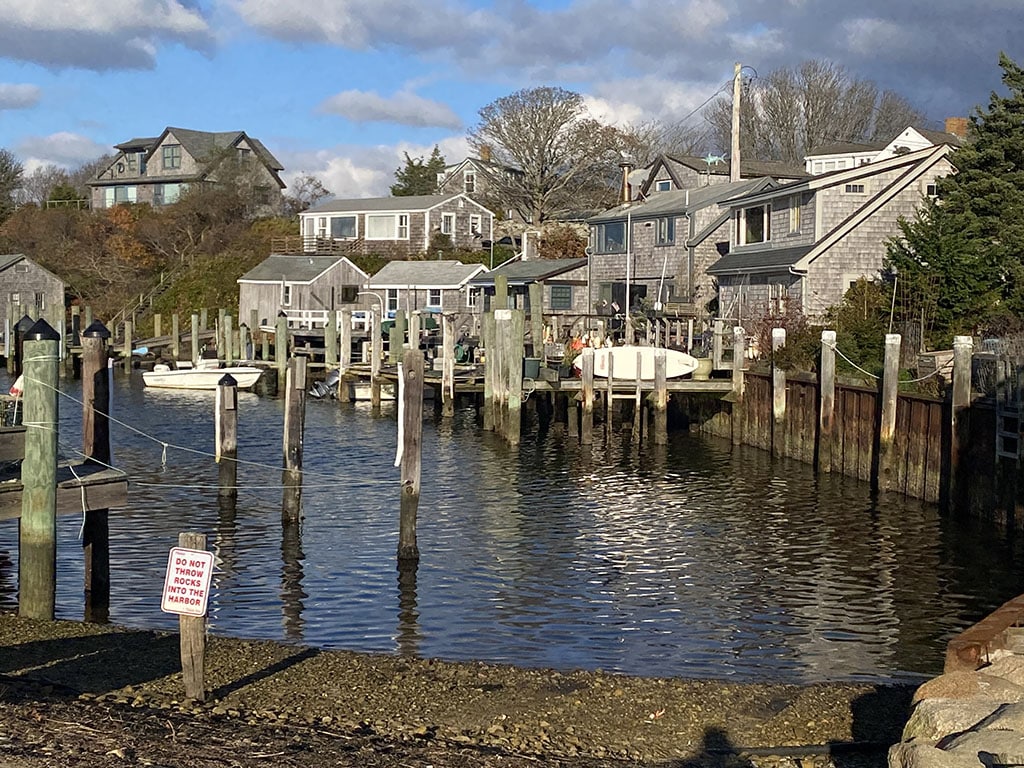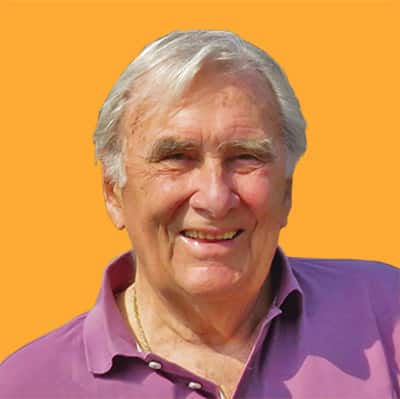I usually write about the great places that Helga and I visit in Europe. However, in November I had the chance to see Martha’s Vineyard in Massachusetts while visiting the American side of my family. These are my reflections.
On May 21, 1602, Bartholomew Gosnold, founder of the Virginia Company of London and leader of the first recorded European expedition to what we now call New England, and his crew of 32, arrived on the shores of an island off the coast of Cape Cod. He observed many vines covering the island and dubbed the place Martha’s Vineyard after his daughter. However, it turned out that the vines were not grape-bearing – so, no vineyards on Martha’s Vineyard.

There were lots of Indians though (these days they are called “Native Americans”). The Wampanoag, which means “people of the first light”, were the resident tribe and, although the early settlers brushed them aside, there are still about 100 Wampanoag living in Aquinnah, in the southwest corner of the island.
The island was settled by the white man in 1642, but it wasn’t until the 19th century that whaling brought great wealth. Although remnants of that industry remain, especially around the small fishing village of Menemsha, whaling was effectively killed off by the discovery of petroleum in Pennsylvania in 1859, which provided much cheaper lamp oil. By 1870, whaling in the Vineyard was finished.
The island was ready for its next act: as a secluded picturesque hideaway for A-List people to crash for their summer break.
Today, Martha’s Vineyard, which is only about 4% the size of the Algarve, has a permanent population of about 17,500. This balloons to over 200,000 in July and August. The island is very beautiful, in a rural New England sort of way (as the photos accompanying this article, taken in November, show). It is accessible by car ferry from Woods Hole, three miles away on Cape Cod, and, in season, by plane.

In 1976, the 200th anniversary year of America’s secession from Britain, Martha’s Vineyard (together with a few nearby like-minded islands) seriously tried to secede from Massachusetts, to become either a separate state or a new country.

Beverly Sills, the opera singer who was a summer resident, was quoted as hoping for full and total independence: “If we do secede, I’m putting in my bid for Minister of Culture.” Art Buchwald hoped for foreign aid as an independent nation: “We’ll split it up, of course, and deposit it in numbered Swiss bank accounts.” Several states, including (believe it or not) Kansas, invited the insurrectionists to join them. Unsurprisingly, the secession effort collapsed in ridicule.
Politicians and their families, in particular, flock to the Vineyard in the summer for its relaxed seclusion and privacy, not to mention the long stretches of beautiful sand beaches.
Although their main “compound” is in Hyannis Port on Cape Cod, the Kennedy family has had a long (albeit checkered) association with Martha’s Vineyard. Ted Kennedy, then a 37-year-old Senator, achieved notoriety on July 18, 1969, when he drove off Dike Bridge on Chappaquiddick (the eastern end of the Vineyard), killing his passenger, Mary Jo Kopechne. Almost 30 years to the day later, John Kennedy Jr. crashed his plane just off Martha’s Vineyard on July 16, 1999, killing himself, his wife and her sister.
On a happier note, Jackie Kennedy Onassis bought the 136-hectare Red Gate Farm, in Aquinnah, in 1979 and, although she died in 1994, the family only sold the property in 2020.

More recently, Bill and Hilary Clinton vacationed on Martha’s Vineyard for five years during Bill’s Presidency. Barack Obama and his family also used the island as their “Summer White House” for several years, staying with friends.
In 2021, Obama bought a 12-hectare waterfront property (for almost $12 million) near the Edgartown Great Pond.
Martha’s Vineyard was in the news recently for a very unusual reason. Ron De Santis, Governor of Florida, shipped two planeloads of Venezuelan immigrants to the island on September 14 unannounced, as a publicity stunt. The strange bit is that the refugees were rounded up in San Antonio, Texas, and flown to Florida in transit to the Vineyard. Of course, local officials took care of the Venezuelans (fortunately the incident was out of season).
A number of movies have been made in Martha’s Vineyard. The most famous of which, “Jaws”, was filmed almost entirely on the island in 1974. Locations included Sylvia Beach and its adjoining bridge (now called “Jaws Bridge”) connecting Oak Bluffs and Edgartown, Edgartown Main St and Menemsha. “Jaws” was the highest grossing film of all time, until “Star Wars” came along, and it kick-started the fantastic directorial career of Steven Spielberg.
If you plan to visit New England, intending to connect with a piece of American history, you should consider spending a few days in Martha’s Vineyard – just not in the summer!
By Larry Hampton




















